The existence of countless energy sources such as wind and sun has turned Iran into an energy mine and the future of energy. For example, Iran, with 300 sunny days, ranks high in the world in the ability to produce solar energy. Iran also has good capacities in the field of wind. The development of wind farms in Iran has been considered in recent years.
One of the most important sources of clean energy in the world is wind. Iranians have realized the importance of this force over the past centuries and have sought to use it. Wind turbines are a symbol of Iranian creativity in using wind.
In Iran, about 1,087 megawatts of electricity is produced from new renewable energies, with wind power plants accounting for about 40% of this.
Manjil Wind Farm
The first wind power plant in Iran and the Middle East began operating in 1994 with the installation of the first 300 kW Danish turbine in the city of Manjil. Gradually, this wind farm expanded with the installation of more turbines at the same site and the sites of Herzwil and Rudbar and finally Siahposh. The project employer was the Atomic Energy Organization, and at the same time, a contract was signed with Saba Niroo Company for the transfer of technology (with the highest capacity of that day, 600 kW).
The turbines of this wind farm are small, with blades measuring about 17 meters long and 34 meters in diameter. Currently (2020), the turbine blades are between 50 and 100 meters long and have capacities of up to 3.5 megawatts. There are about 120 to 130 turbines operating in this farm, generating about 100 megawatts of electricity.
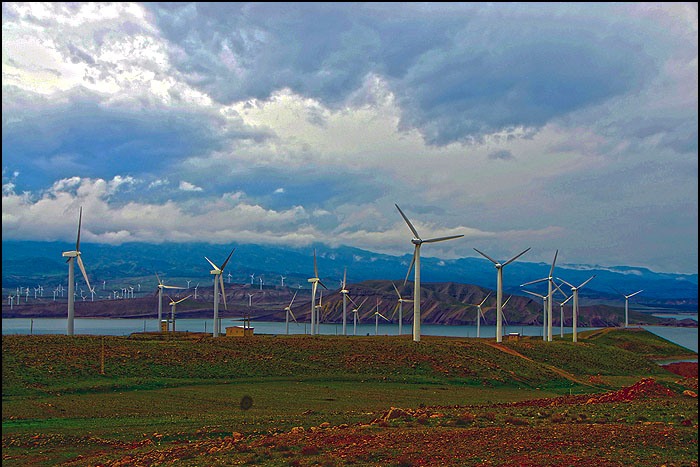
Binaloud Wind Farm
Among the known sites in the world, there are two distinct sites: the Altamont Pass site in California and the Binaloud site. The difference between these two sites is that the wind blows more in the summer. As a result, the production of these two sites is also at its peak in the summer, when consumption is at its peak. Preliminary work began in 1974.
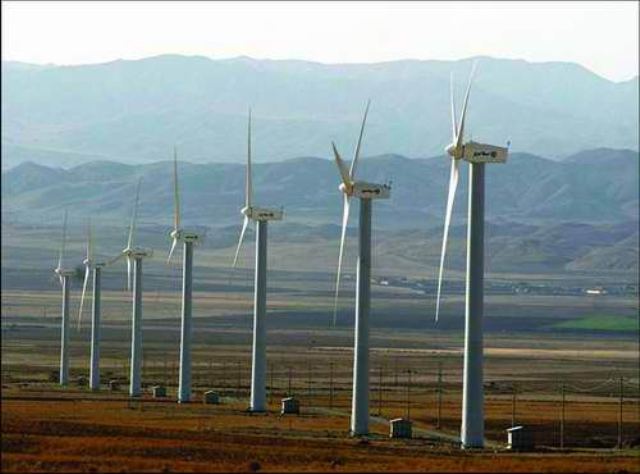
Kahak Wind Farm
The Qazvin Kahak Wind Farm has used 2.5 MW turbines for the first time. The development phase of this wind farm was inaugurated on March 12, 2016. The Qazvin Kahak Wind Farm was established by MAPNA Group in an area of more than 4,000 hectares. The 22 turbines of this wind farm generate about 55 MW of electricity. 30 million euros were spent on the construction and inauguration of the first phase of this power plant.

Aqkand Wind Farm
The Aqkand Wind Farm, as the second wind farm of MAPNA Group, was put into operation in December 2019. This farm is equipped with 20 2.5 MW wind turbines with a total capacity of 50 MW in the Aqkand region of Mianeh County, East Azerbaijan Province.
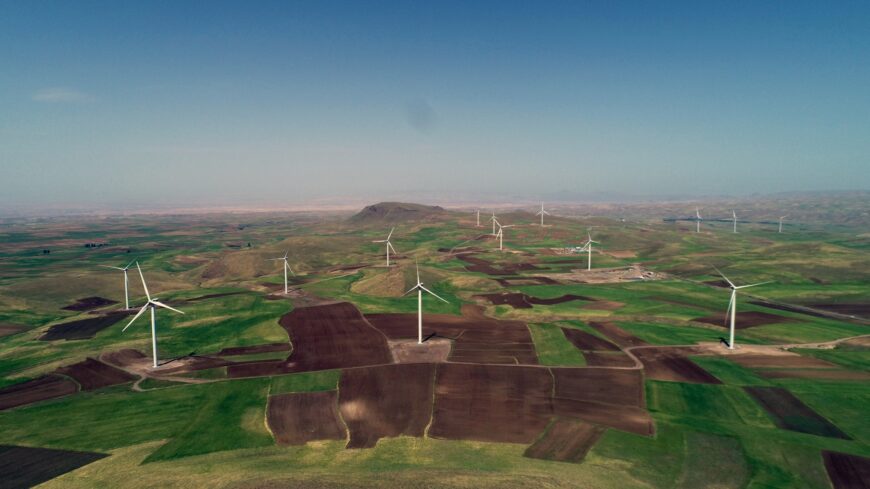
Black Wind Farm
At the Siahposh site (located on the western side of the Sefid Rood Dam lake), turbines with a capacity of 3.4 MW without gearboxes have been used for the first time. The wind farm opened in the spring of 2018 and includes 18 wind turbine units manufactured by Siemens, which will produce about 60 MW of electricity.

Sistan Wind Power Plant
The 120-day winds of Sistan and Baluchestan province have created a good opportunity for the establishment of wind farms. With the commissioning of the first turbine of the Mil Nader wind farm in November 2019, it is hoped that 20 turbines will be installed by the end of 1400. In this case, a capacity of 50 megawatts will be achieved in this area in an area of about 17,000 hectares.
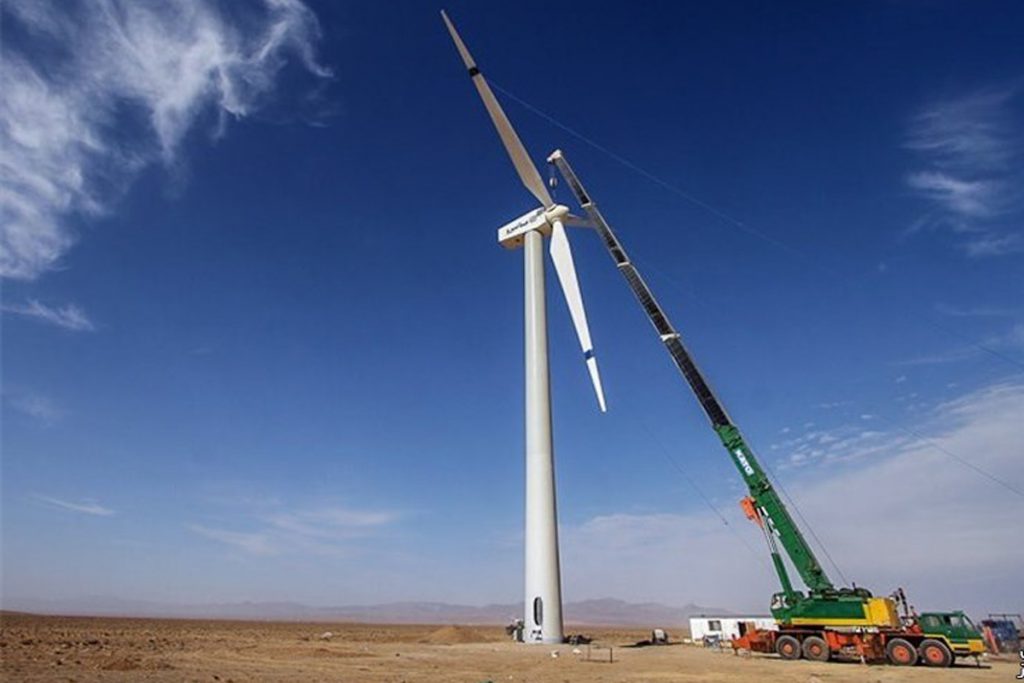
Facts about Iran’s wind farms:
- Currently (1400) the nominal capacity of Iran’s power plants is about 300 MW, which is one hundredth of Iran’s developable capacity and very small compared to the world. Currently, the largest wind power plant under construction in the world is in Gansu, China.

Currently, Iran-made turbines have a capacity of 3.4 megawatts. Each blade is 53 meters long (the world’s largest blade is 100 meters long). The turbine is about 85 meters high (a 30-story building). Each turbine weighs 300 tons (the same weight as an Airbus A380).
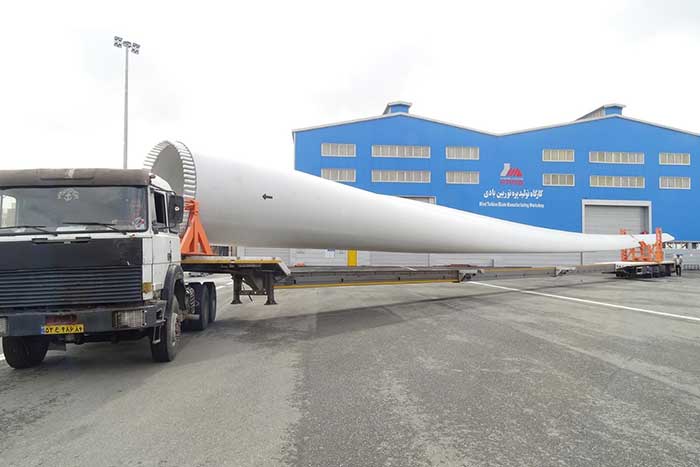
Existing wind turbines generate electricity at wind speeds of 12 km/h to 90 km/h and stop moving at lower and higher wind speeds.
For every 100 megawatts of electricity produced, 100 million liters of diesel are saved. Each 2.5 megawatt turbine produces enough electricity for 350 households.


